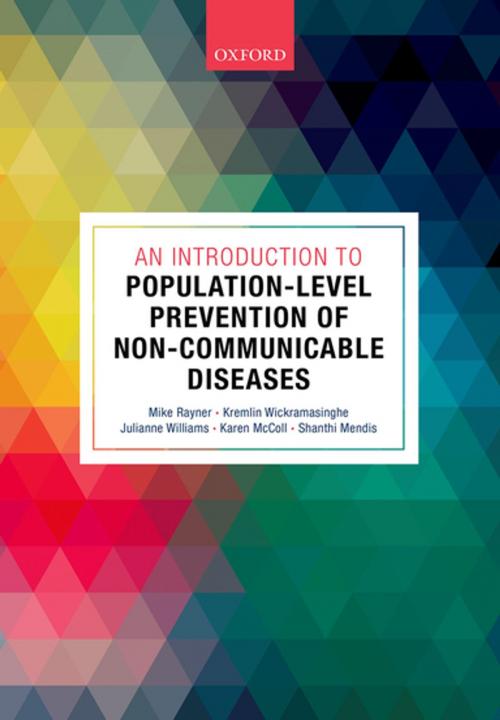An Introduction to Population-level Prevention of Non-Communicable Diseases
Nonfiction, Health & Well Being, Medical, Reference, Public Health| Author: | ISBN: | 9780192508690 | |
| Publisher: | OUP Oxford | Publication: | March 9, 2017 |
| Imprint: | OUP Oxford | Language: | English |
| Author: | |
| ISBN: | 9780192508690 |
| Publisher: | OUP Oxford |
| Publication: | March 9, 2017 |
| Imprint: | OUP Oxford |
| Language: | English |
Non-communicable diseases (NCDs) kill more people than anything else in the world. They include cardiovascular diseases, such as heart attacks and strokes; cancers; chronic respiratory diseases, such as chronic obstructed pulmonary disease and asthma; and diabetes. In 2013, the World Health Organization published a global action plan for the prevention and control of NCDs which set a target to reduce death rates from NCDs by 25% by 2025. In response, countries have been drawing up national-level NCD prevention policies and programmes. New departments have been created by governments, NGOs, and other organizations to drive this agenda forward, creating a need for capacity building and training. In response to this need, the Nuffield Department of Population Health and the Department for Continuing Education at the University of Oxford initiated an accredited six-day short course on prevention strategies for non-communicable diseases with a population-based approach. In the past, many attempts to engage with NCD prevention have centred on individual-level interventions, such as screening and treating individual patients. In this new book, the course organisers provide a solid introduction to the population-based approach and bring together the concepts, evidence, and methods that define it. An Introduction to Population-Level Prevention of Non-Communicable Diseases takes readers through the entire policy cycle: from problem definition, solution generation, capacity building, and implementation to evaluation and monitoring. The book includes a wide range of case studies and practical examples of plans and projects that illustrate the real-life applications of theory. This book provides an unparalleled overview of population-based approaches to the prevention of non-communicable diseases, reflecting the latest research in the field. It is a key resource for anyone with an interest in NCD prevention, particularly early-career professionals working in governments, NGOs, health care institutions, and universities as they develop the knowledge and skills required for effective population-based prevention strategies.
Non-communicable diseases (NCDs) kill more people than anything else in the world. They include cardiovascular diseases, such as heart attacks and strokes; cancers; chronic respiratory diseases, such as chronic obstructed pulmonary disease and asthma; and diabetes. In 2013, the World Health Organization published a global action plan for the prevention and control of NCDs which set a target to reduce death rates from NCDs by 25% by 2025. In response, countries have been drawing up national-level NCD prevention policies and programmes. New departments have been created by governments, NGOs, and other organizations to drive this agenda forward, creating a need for capacity building and training. In response to this need, the Nuffield Department of Population Health and the Department for Continuing Education at the University of Oxford initiated an accredited six-day short course on prevention strategies for non-communicable diseases with a population-based approach. In the past, many attempts to engage with NCD prevention have centred on individual-level interventions, such as screening and treating individual patients. In this new book, the course organisers provide a solid introduction to the population-based approach and bring together the concepts, evidence, and methods that define it. An Introduction to Population-Level Prevention of Non-Communicable Diseases takes readers through the entire policy cycle: from problem definition, solution generation, capacity building, and implementation to evaluation and monitoring. The book includes a wide range of case studies and practical examples of plans and projects that illustrate the real-life applications of theory. This book provides an unparalleled overview of population-based approaches to the prevention of non-communicable diseases, reflecting the latest research in the field. It is a key resource for anyone with an interest in NCD prevention, particularly early-career professionals working in governments, NGOs, health care institutions, and universities as they develop the knowledge and skills required for effective population-based prevention strategies.















